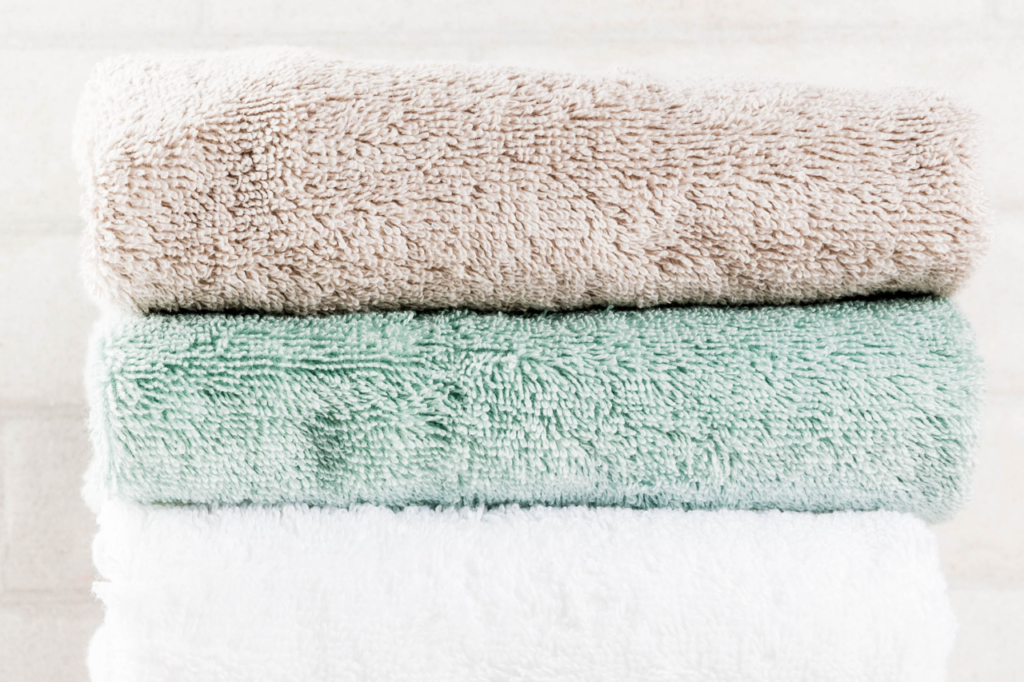Terry is a fabric with loops of yarn on its surface. The loops, which are central to the structure of the fabric, are created by a double weave, i.e., two warp systems. The loops can be uncut, giving the fabric a soft and fuzzy surface. They can also be cut, meaning the loops are ‘cut’ and give the fabric a velvety surface.
Terry cloth is known for effectively absorbing moisture, making it particularly useful for products such as towels and bathrobes. It can also be used in clothing and furnishing materials such as carpets.

We can make terry from different materials, such as cotton or bamboo, and there are various terry fabrics, including single and double terry. Single terry has loops on only one side of the fabric, while double terry has loops on both sides.
We can also knit the terry. Woolpower’s wool terrycloth is an example, where one side is plain knit, and the other consists of terrycloth loops—combining the fluffy loops and the crinkly fibres of the wool results in a jersey that binds a lot of air, up to 80%. There are very few contact points with the body, which means that heat is retained, while the thin material and the properties of the fibres mean that moisture is transported away from the body.
Sources
FabricLink – Textile Dictionary ![]()
Heddels – All About Terry – The History & Importance of French Terry & Terrycloth ![]()
Woolpower – Ullfrotté Original ![]()
December 2023, TÄNKOM | Revised March 2024 RETHINK



